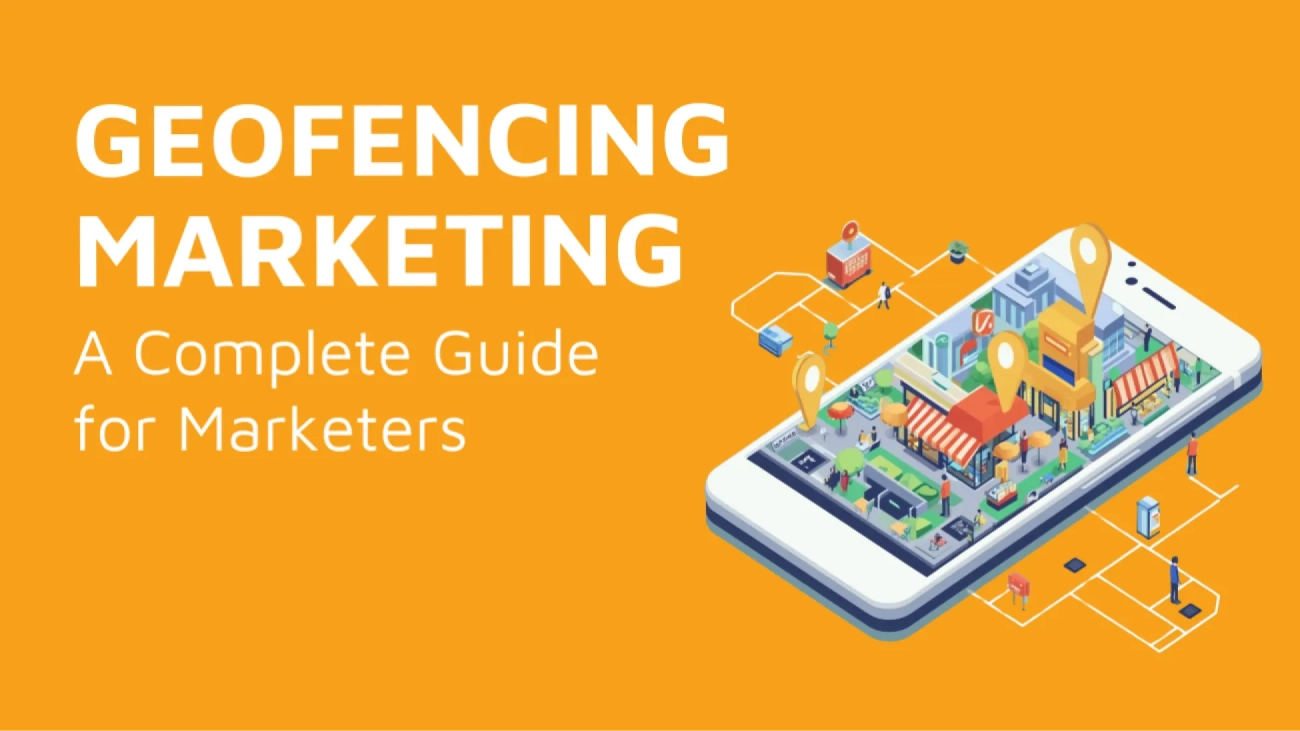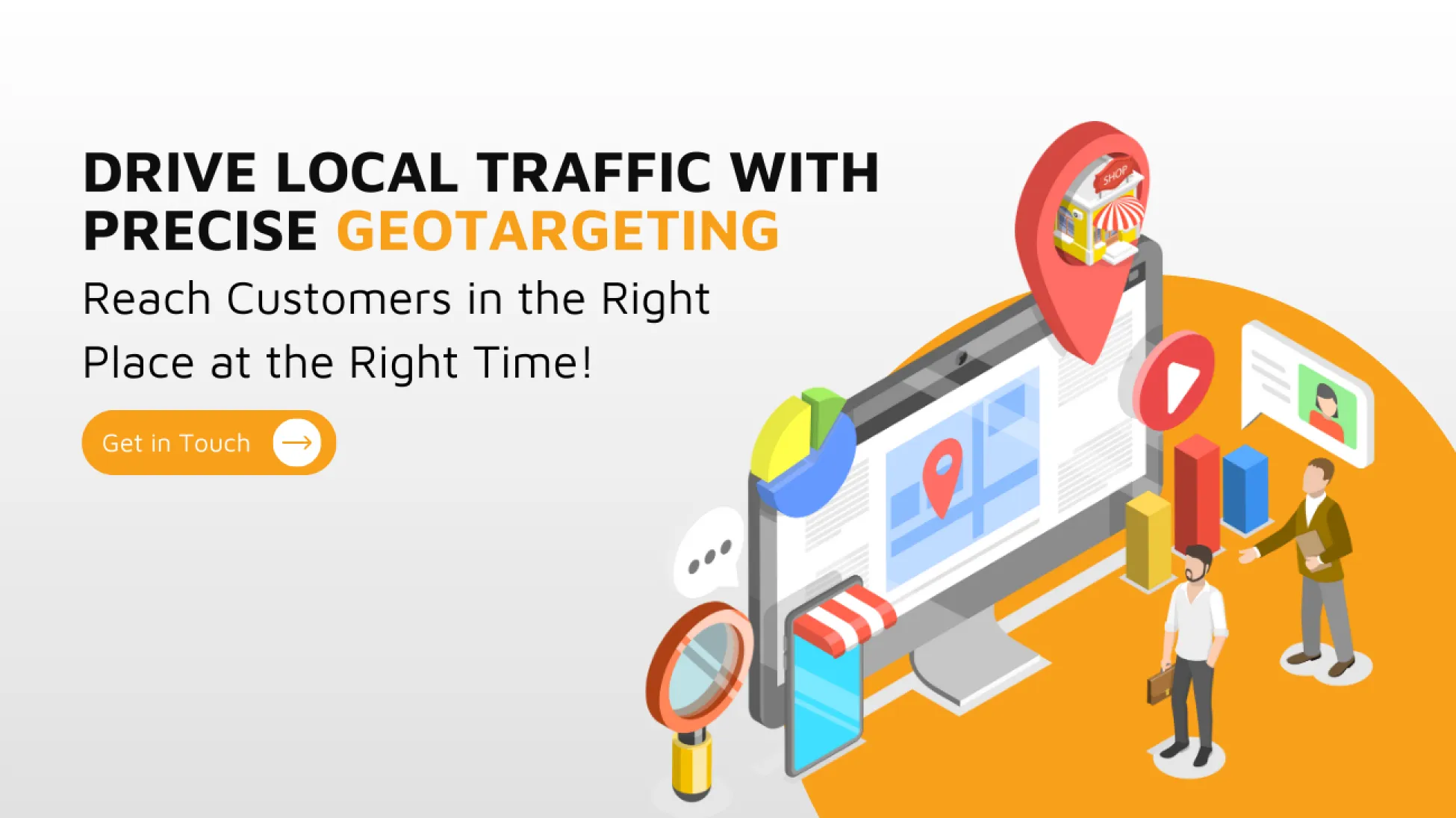What is Geofencing Marketing?
Geofencing marketing is a location-based marketing strategy that uses GPS, Wi-Fi, or RFID technology to create a virtual boundary around a specific geographic area. Once users with mobile devices enter this “geofence,” they can receive targeted messages, ads, or notifications, making it a powerful tool for businesses aiming to reach local audiences.
This approach integrates easily into digital marketing strategies, offering precise targeting capabilities for enhanced engagement and ROI. From mobile advertising to geotargeting, geofencing is a game-changer in modern marketing.
Benefits of Geofencing Marketing
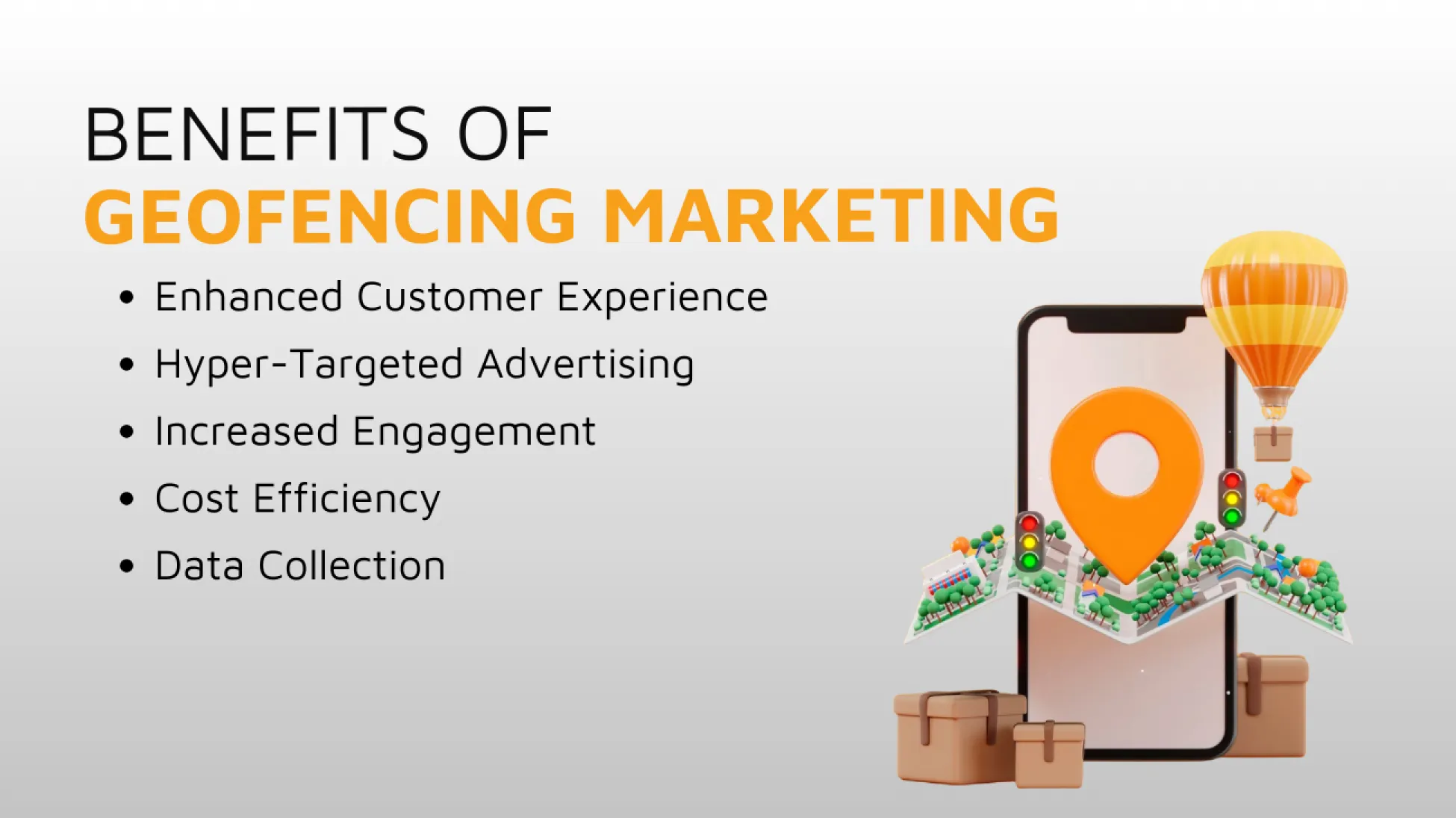
Hyper-Targeted Advertising
Geofencing allows businesses to target audiences based on their real-time location, ensuring that ads are relevant and timely. A geofencing example of hyper-targeting is a coffee shop that sends a discount notification to users near its location during morning hours.
Increased Engagement
Personalized, location-based messages drive higher engagement than generic advertising campaigns.
Cost Efficiency
Businesses can minimize ad spending while maximizing impact by targeting a specific area.
Data Collection
Geofencing provides insights into customer behavior, including visit patterns and dwell time, which can inform future digital marketing strategies.
Enhanced Customer Experience
Timely and relevant communication enhances the overall user experience, building brand loyalty and increasing the chance of impulsive buying.
How Geofencing Marketing Works
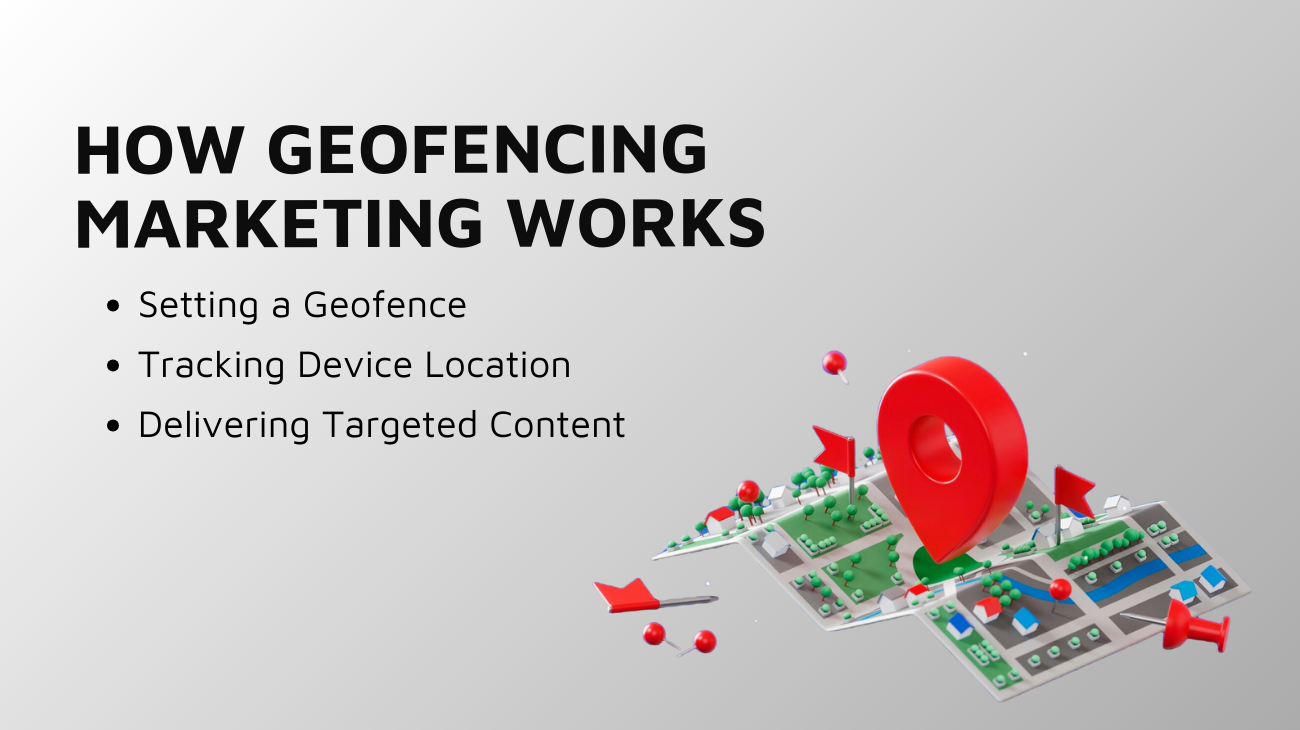
Setting a Geofence
A geofence is a virtual perimeter set around a location, such as a store, event venue, or competitor’s location.
Tracking Device Location
Mobile devices within the geofence are tracked using GPS, Bluetooth, or Wi-Fi signals.
Delivering Targeted Content
Once a user enters the geofence, they receive personalized messages via push notifications, geofencing ads, or SMS.
Geofencing Marketing Examples
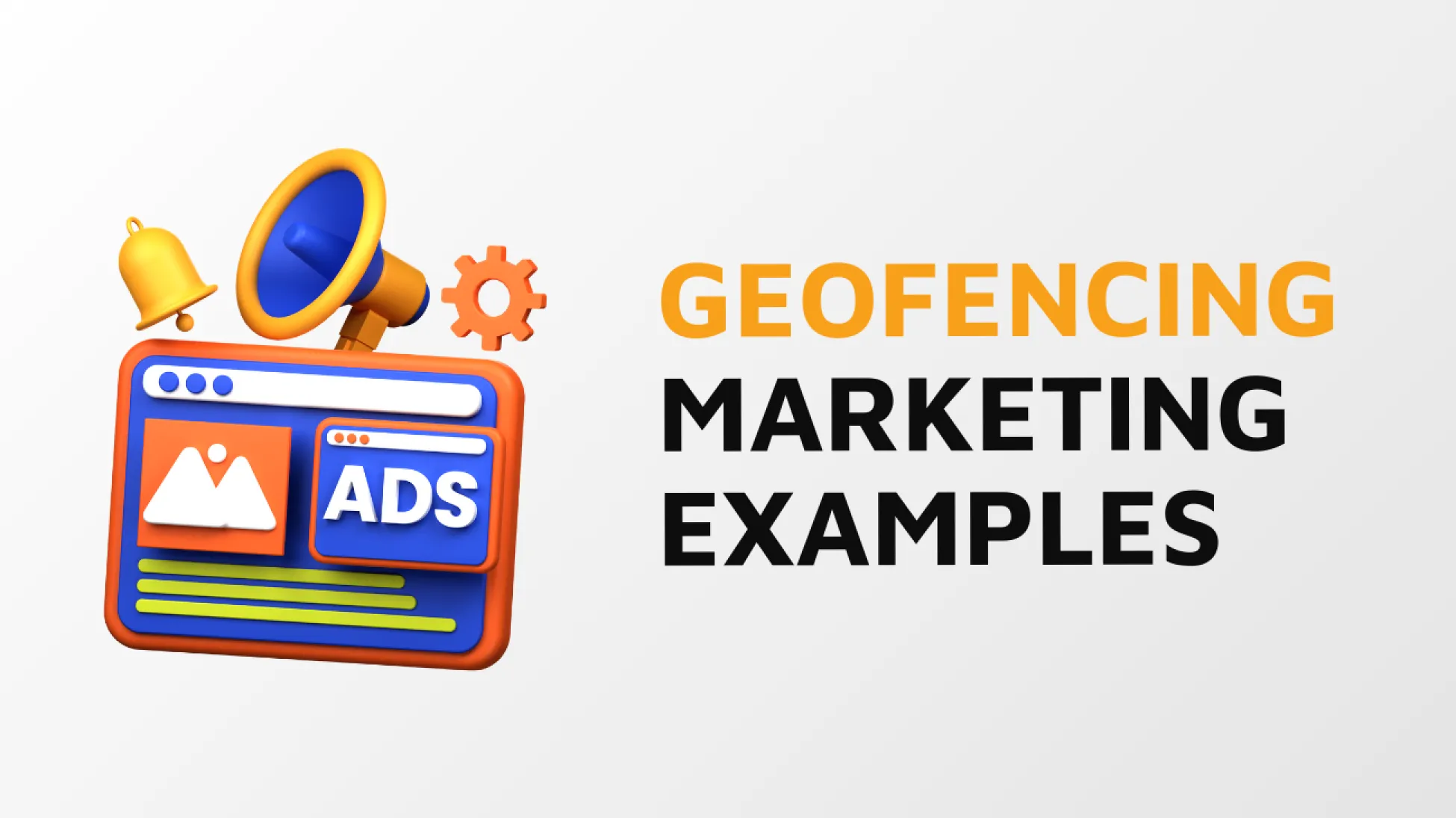
Retail
A clothing store sends discount coupons to shoppers entering a nearby mall.
Restaurants
A pizza place targets customers near a competitor with offers like “Get 20% off your first order today!”
Events
Concert organizers use geofence marketing campaigns to promote ticket sales to users near the venue.
Fitness Centers
Gyms use location-based marketing to offer free trials to users near their locations.
Real Estate
Agents target potential buyers near open house events using geofencing mobile marketing.
Geotargeting vs. Geofencing
While both are location-based marketing strategies, they differ in scope:
- Geotargeting focuses on targeting users based on their general location (e.g., city, state).
- Geofencing creates a virtual boundary around a specific area and targets users within that space.
Geofencing in Digital Advertising
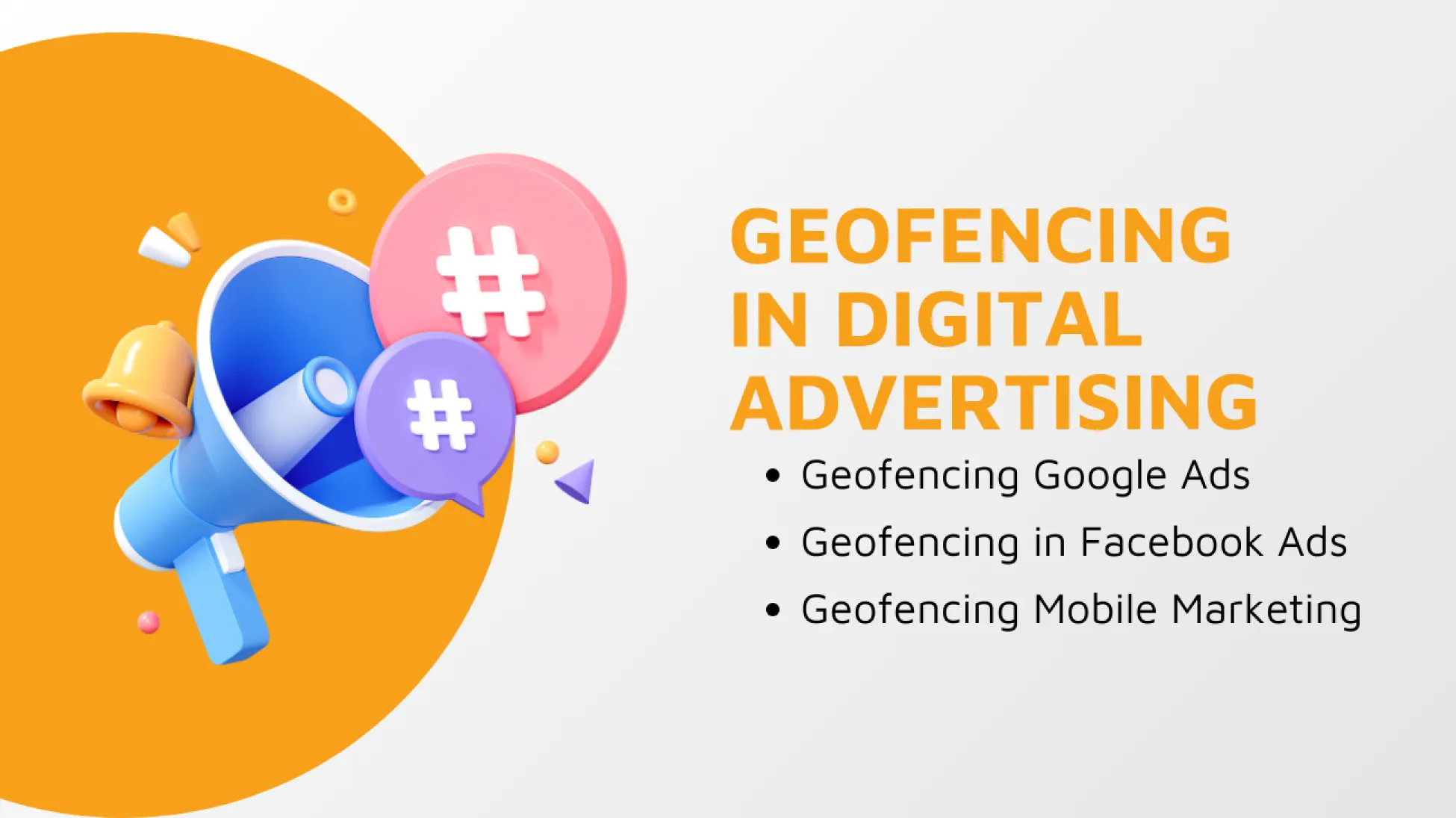
Geofencing Google Ads
Google Ads allows advertisers to use geofencing to target users in specific locations. This ensures that ads appear only to people within your defined geographic area, improving relevance and ROI.
Geofencing in Facebook Ads
With Facebook’s geotargeting features, businesses can create highly localized ads. For instance, a small business can target users who are within a 5-mile radius of their shop.
Geofencing Mobile Marketing
SMS and Mobile ads are a key component of geofencing strategies, leveraging apps to deliver personalized ads based on users’ locations.
Geofencing Marketing Strategy: How to Get Started
- Define Clear Goals
Identify what you aim to achieve, whether it’s driving foot traffic, increasing sales, or promoting brand awareness.
- Choose the Right Geofencing Platform
Select a platform that aligns with your business needs, such as Google Ads, Facebook, or Instagram.
- Set Precise Geofences
Avoid overly broad targeting. A smaller, well-defined geofence can yield better results by focusing on highly relevant audiences.
- Create Engaging Content
Ensure that your geofencing ads include compelling offers, such as discounts, exclusive deals, or limited-time promotions.
- Track and Analyze Results
Use analytics tools to measure the performance of your geofencing campaigns, including engagement rates and ROI.
Geofencing Marketing Campaigns: Best Practices
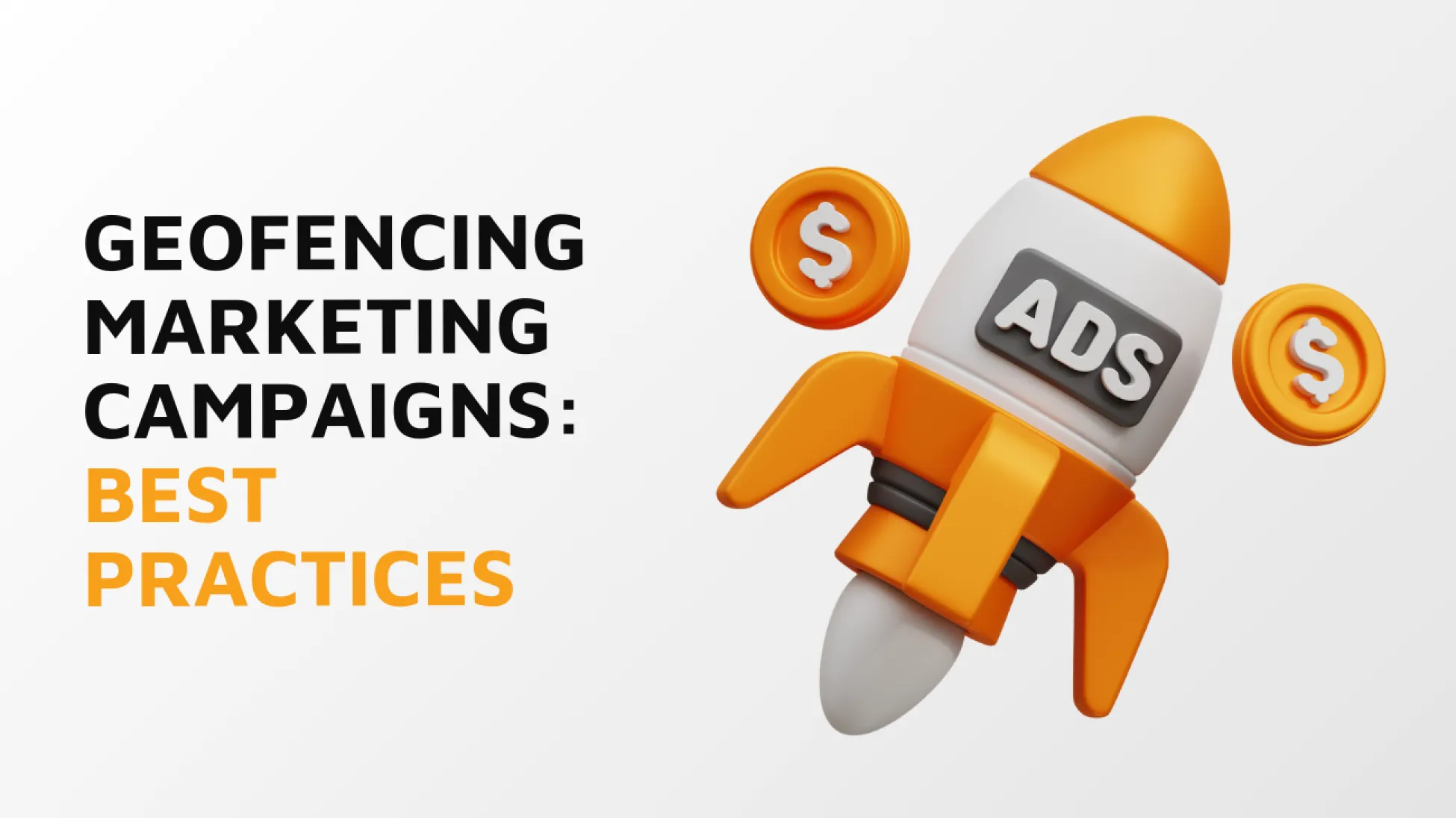
Time It Right
Deliver ads when users are most likely to engage, such as during lunch hours for restaurants or after work hours for gyms.
Personalize Messages
Use customer data to tailor your messages. For example, offer birthday discounts to users within your geofence.
Use Multiple Channels
Combine geofencing with other digital marketing strategies, such as email campaigns and retargeting ads on Google, Facebook, and Instagram.
Monitor Competitors
Set geofences around competitor locations to attract their customers with better offers.
Challenges in Geofencing Marketing
Privacy Concerns
Users may feel uncomfortable with location tracking. Communicate how their data will be used and ensure compliance with privacy laws.
Battery Drain
GPS tracking can drain mobile device batteries, potentially deterring users from participating in geofencing campaigns.
Location Accuracy Issues
Geofencing relies on precise and accurate location data, which can sometimes be affected by environmental factors.
The Future of Geofencing Marketing
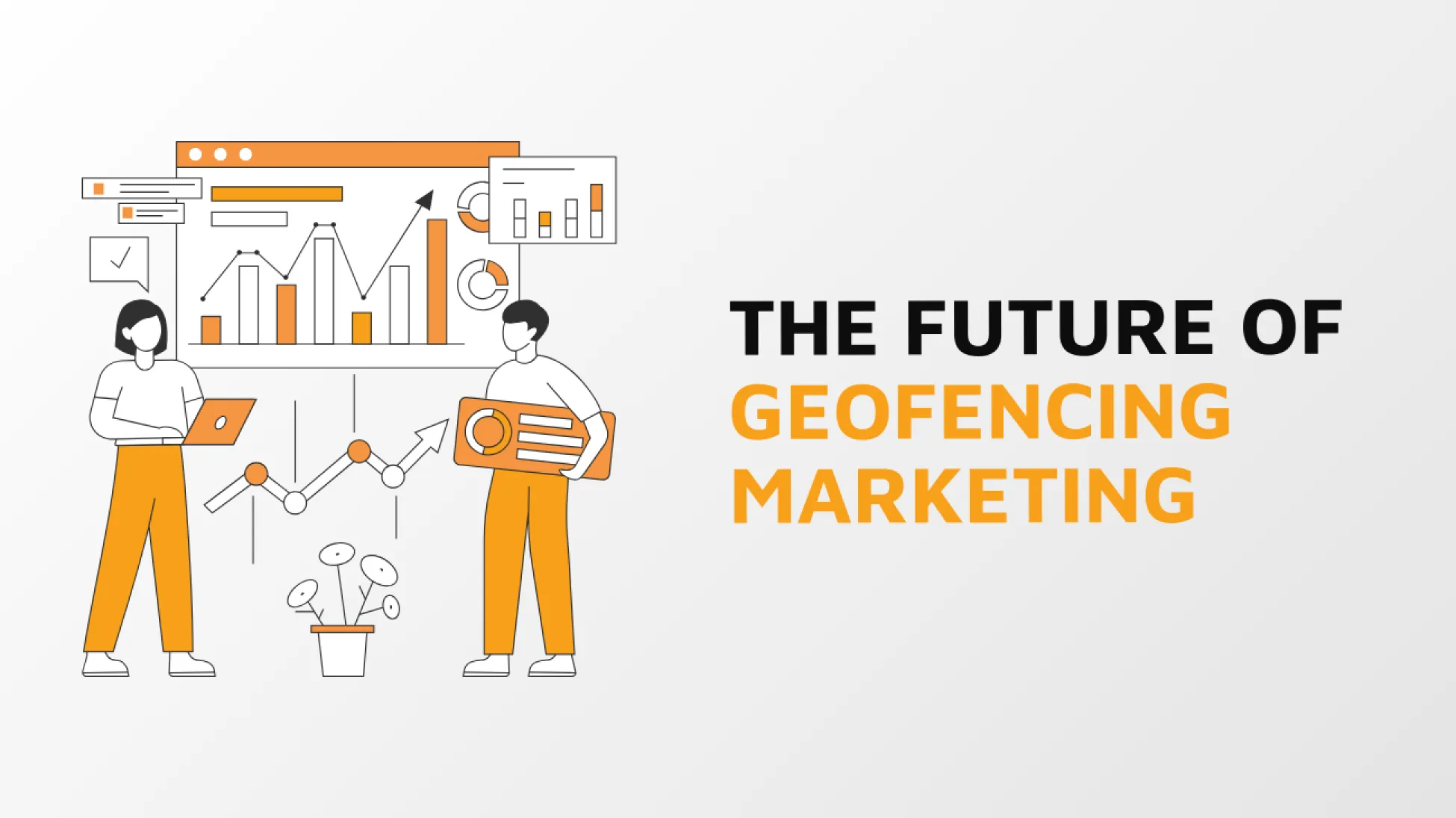
As technology evolves, geofencing will integrate more effortlessly with AI, IoT devices, and augmented reality, offering even more personalized and immersive experiences. For businesses, this means greater opportunities to refine digital marketing geofencing strategies, reaching out to potential customers who have a greater chance of converting into paying clients and staying ahead of the competition.
Conclusion
Geofencing marketing is an innovative approach to reaching customers in real time, delivering personalized content that resonates. By leveraging technologies like WiFi, GPS, and Bluetooth, businesses can create highly effective geofence marketing campaigns that enhance customer engagement and drive results.
For businesses looking to stay ahead, integrating geofencing into their digital marketing efforts is no longer optional—it’s essential. At CyberX Studio, we have Marketing Experts who create impactful geofencing advertising strategies tailored to your business goals. Contact us to advance your marketing game!
FAQs
Is geofencing marketing expensive?
Costs vary depending on the platform and campaign size, but geofencing is often more cost-effective due to its hyper-targeted approach.
How accurate is geofencing?
Geofencing is mostly accurate, with location precision typically within a few meters, depending on the technology used (GPS, Wi-Fi, or Bluetooth).
Can geofencing be used for B2B marketing?
Yes, businesses can use geofencing to target attendees at trade shows, conferences, or competitor locations with tailored messaging.
What platforms support geofencing advertising?
Platforms like Google Ads, Facebook, Instagram, and specialized tools like Bluedot and Radar support geofencing advertising.
Is geofencing marketing legal?
Yes, but businesses must comply with privacy laws and seek user consent before tracking their location.
How does geofencing mobile marketing differ from desktop targeting?
Geofencing mobile marketing leverages mobile devices for real-time, location-based ads, making it more dynamic than static desktop targeting.
Can geofencing be used for app marketing?
Absolutely! App marketers can use geofencing to deliver in-app notifications or promotions when users are near a specific location.
What data can I collect with geofencing?
Data such as foot traffic, visit frequency, dwell time, and user engagement can be collected, offering valuable customer insights.
Can small businesses use geofencing marketing?
Yes, small businesses can benefit greatly from geofencing due to its affordability and ability to target hyper-local audiences.
How do I measure the success of a geofencing campaign?
Success can be measured using metrics like engagement rates, conversions, foot traffic, and ROI analysis.
Does CyberX Studio offer geofencing marketing services?
Yes, CyberX Studio specializes in geofencing marketing and can create targeted, location-based campaigns to boost engagement and sales.
How can I get geofencing marketing services from CyberX Studio?
Contact CyberX Studio through their website or customer support to discuss your business needs. The team will guide you through the process and create a customized geofencing strategy.
What industries does CyberX Studio serve with geofencing marketing?
CyberX Studio offers geofencing marketing services for retail, real estate, food and beverage, events, fitness, and other industries.
How does CyberX Studio ensure the success of geofencing campaigns?
CyberX Studio uses proper research, advanced tools, data analytics, and personalized strategies to optimize geofencing campaigns for maximum ROI.
Can CyberX Studio integrate geofencing with my existing digital marketing strategy?
Yes, CyberX Studio can integrate geofencing marketing with your broader digital marketing efforts, including SEO, PPC, and social media.
What is the cost of geofencing marketing services at CyberX Studio?
Costs depend on the campaign scope and requirements. Contact CyberX Studio for a personalized quote.

